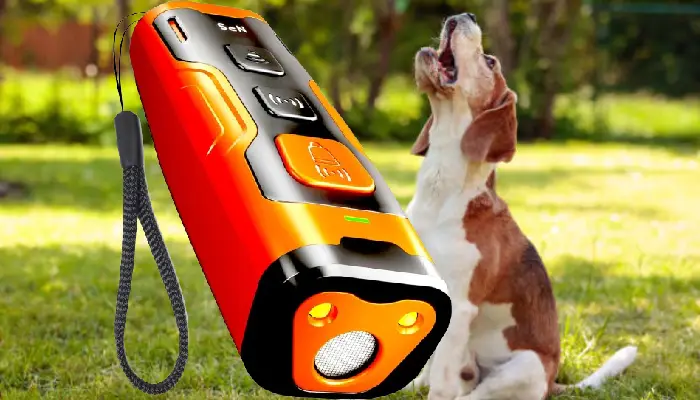Excessive barking is one of the most common challenges for dog owners, often causing stress for both pets and humans. Selecting the best Dog Bark Control Devices in 2025 can restore peace in your home while keeping your dog safe and happy. From Smart Collars to Soft Muzzles, understanding the differences and applications of these tools is key to effective behavioral management.

Understanding Dog Bark Control Devices
Before choosing a device, it’s crucial to understand how Dog Bark Control Devices work and which type suits your dog’s specific needs.
Types of Barking and Corresponding Devices
-
Anxiety or Separation Barking: Persistent and high-pitched, often requiring calming aids alongside devices like anxiety vests or pheromone diffusers.
-
Alert or Territorial Barking: Triggered by external stimuli, best managed with boundary training systems or ultrasonic bark control devices.
-
Attention-Seeking Barking: Often resolved with ignoring the bark and rewarding silence; devices alone are not enough.
Ethical Approach to Dog Bark Control Devices
Choosing the most humane devices is essential:
-
Interruption vs. Punishment: Effective devices provide mild, non-painful interruptions, such as vibration or sound, rather than shock.
-
Positive Reinforcement: Reward quiet behavior while using devices to create long-lasting habits.
Top 5 Dog Bark Control Devices in 2025
1. Smart Collars (App-Enabled Correction)
-
How They Work: Detect barks via sensors and deliver vibration, ultrasonic, or mild static correction.
-
Key Features: App control, data tracking, GPS (optional).
-
Best For: Multi-dog households and owners who want precise data.
2. Ultrasonic Bark Control Devices (Acoustic Deterrents)
-
How They Work: Emit a high-pitched sound that interrupts barking.
-
Considerations: Some dogs may habituate; may affect other pets.
-
Best For: Territorial barking and outdoor use.
3. Citronella Spray Collars
-
How They Work: Release harmless citronella near the dog’s snout when barking is detected.
-
Pros: Humane, effective.
-
Cons: Refills required; some dogs tolerate it quickly.
-
Best For: Dogs sensitive to scent interruptions.
4. Soft Muzzles and Head Halters
-
How They Work: Restrict barking physically or redirect attention with gentle pressure.
-
Considerations: Temporary use only; never restrict panting or drinking.
-
Best For: Situational control, like grooming or vet visits.
5. Vibration and Tone Collars
-
How They Work: Beep and vibrate when barking is detected.
-
Best For: Small or sensitive dogs; non-static option to start training.
How to Select the Right Device
-
Match the device to your dog’s temperament.
-
High-Drive Dogs: Use Smart Collars with adjustable vibration/static.
-
Nervous/Anxious Dogs: Stick to non-physical interruptions.
Training Protocol for Dog Bark Control Devices
-
Introduce Quietly: Wear the device without activation.
-
Reward Silence: Reinforce quiet behavior immediately after the bark is interrupted.
-
Wean the Device: Gradually remove active correction as quiet behavior becomes consistent.
Frequently Asked Questions (FAQ)
Q: Are static collars humane in 2025?
A: Only low-level, regulated static collars under professional guidance are considered humane. High-level shock collars are not recommended.
Q: Do I need a professional trainer?
A: Not mandatory, but a trainer can help diagnose causes and create a customized plan for faster, safer results.
Q: How do I know if the device works?
A: Success is measured by decreased barking over time, not instant silence. Avoid signs of distress or substitute behaviors.

Compliance & Disclaimer
This article is for informational purposes only. Consult a certified professional dog trainer (CPDT-KA) or a veterinary behaviorist before implementing any Dog Bark Control Devices.
External References:











